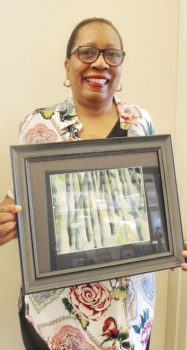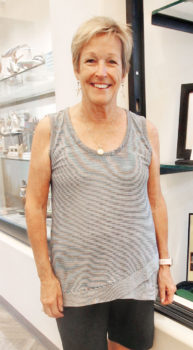

 Marianne Graff
Marianne Graff
The PebbleCreek Art Club continues its presentation of A Summer of Watercolor. Part I contained a brief history of watercolor painting along with a discussion of the tools and special features of this unique medium. Part II will continue into the British phase of watercolor along with five PebbleCreek artists who prosper in this noble tradition.
Although evidence of historical watercolor use has been found around the globe, watercolor made striking advances in Britain chiefly as a result of improvements in paper, paints and tools from about mid-18th century to mid-19th cited by Elizabeth E. Barker as “the Golden Age of watercolor.” Also, a market for collecting portfolios of original watercolor landscapes or copies of famous paintings flourished during this time period. The development of the medium was also supported by emerging watercolor painting societies in the 19th century. Their support came in the form of exhibitions, buyer referrals and sponsoring aesthetic debates about the true nature of watercolor painting as well as providing a forum for sharing ideas about methods and tools. [Wikipedia]
Three English artists are credited “with establishing watercolor as an independent, mature painting medium”: “Paul Sandby [1730-1809] often called ‘the father of the English watercolor’; Thomas Girtin [1775-1802] who pioneered its use for large format, romantic or picturesque landscape painting; and Joseph Mallord William Turner [1775-1851], who brought watercolor painting to the highest pitch of power and refinement, and created hundreds of superb historical, topographical, architectural, and mythological watercolor paintings.” Turner painted in stages—using large areas of color as underpinning to more detailed content accentuated with washes and glazes. [Wikipedia]
Other painters in the 19th century were Joseph Cotman, David Cox, Thomas Collier, John Frederick Lewis and Richard Parkes Bonnington, whose “graceful, lapidary, and atmospheric watercolors [‘genre paintings’] created an international fad for watercolor painting, especially in England and France in the 1820s.” [Wikipedia] During this period, artists sought to compete with the more celebrated oil painters. Experimentation and development of new ideas soon advanced the popularity of watercolor.
These five PebbleCreek artists are worthy heirs of the watercolor tradition; they do excellent work and share their talents with other artists. Gale Baldasare, served the Art Club as Co-chair of the 2017 Meet the Artist project and as Vice-President of Education. She has created an outstanding painting of her husband in graphite and watercolor. Susan Gleason, present Art Club Webmaster, who formerly studied watercolor at the Fashion Institute of Technology in New York, has three watercolor florals on display. Alice Haywood energetically studies watercolor and her distinctive work explores the atmospheric qualities of the medium. Marsha Lisle, a member of the Artist of the Month committee, is an outstanding watercolorist. See her dramatic “Out of the Box” portrait of a moose. Desirée Mansell is a teacher of Calligraphy and, in addition to incorporating watercolor in her calligraphic pieces, executes superb landscapes in watercolor. You are invited to view their work on display in the Creative Arts Center and in the Eagle’s Nest and Tuscany Falls clubhouses.
